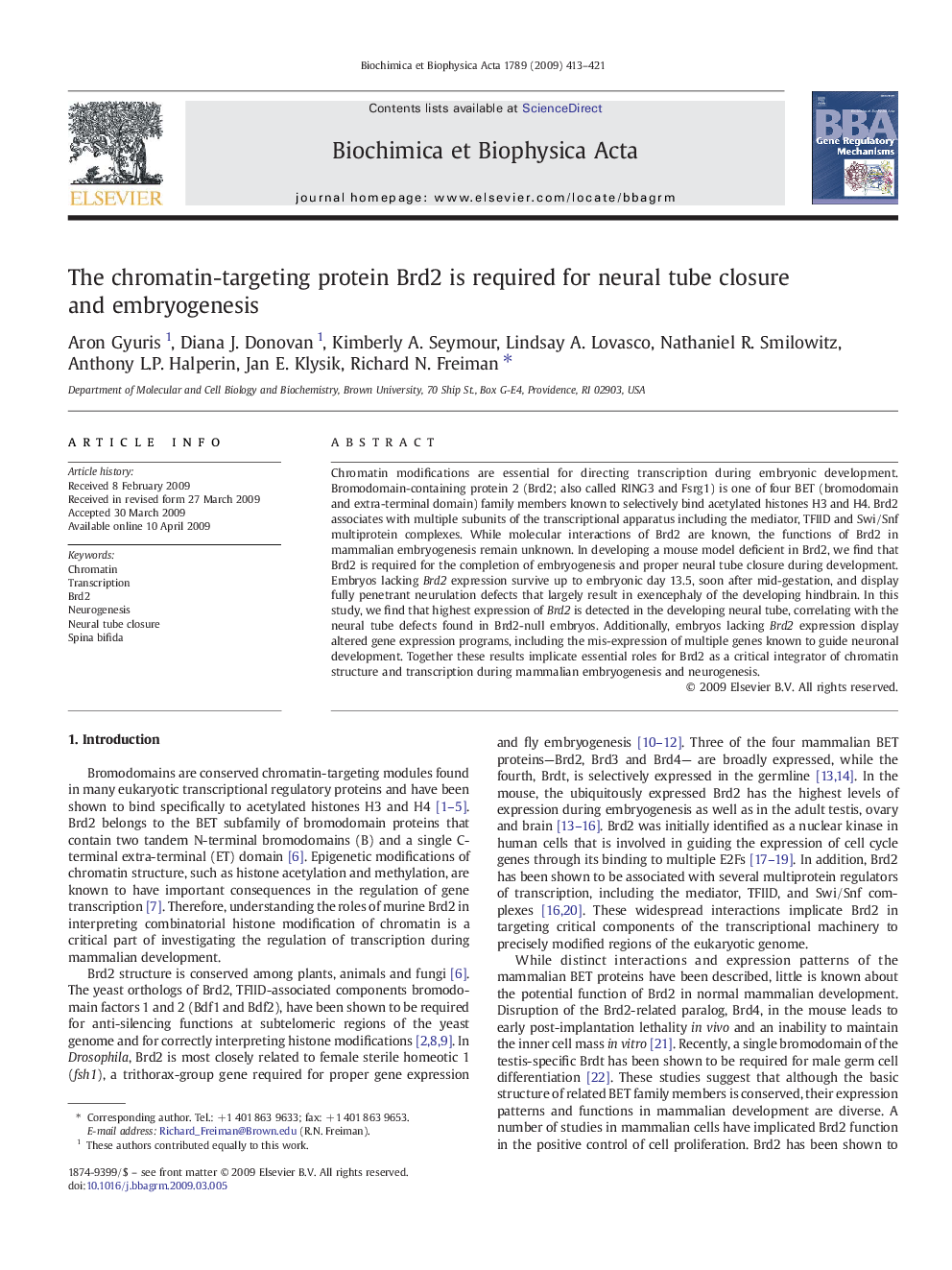| Article ID | Journal | Published Year | Pages | File Type |
|---|---|---|---|---|
| 1946900 | Biochimica et Biophysica Acta (BBA) - Gene Regulatory Mechanisms | 2009 | 9 Pages |
Chromatin modifications are essential for directing transcription during embryonic development. Bromodomain-containing protein 2 (Brd2; also called RING3 and Fsrg1) is one of four BET (bromodomain and extra-terminal domain) family members known to selectively bind acetylated histones H3 and H4. Brd2 associates with multiple subunits of the transcriptional apparatus including the mediator, TFIID and Swi/Snf multiprotein complexes. While molecular interactions of Brd2 are known, the functions of Brd2 in mammalian embryogenesis remain unknown. In developing a mouse model deficient in Brd2, we find that Brd2 is required for the completion of embryogenesis and proper neural tube closure during development. Embryos lacking Brd2 expression survive up to embryonic day 13.5, soon after mid-gestation, and display fully penetrant neurulation defects that largely result in exencephaly of the developing hindbrain. In this study, we find that highest expression of Brd2 is detected in the developing neural tube, correlating with the neural tube defects found in Brd2-null embryos. Additionally, embryos lacking Brd2 expression display altered gene expression programs, including the mis-expression of multiple genes known to guide neuronal development. Together these results implicate essential roles for Brd2 as a critical integrator of chromatin structure and transcription during mammalian embryogenesis and neurogenesis.
